The Benefits of Active Vs. Passive Investing: A Balanced Approach!
The Benefits of Active Vs. Passive Investing: A Balanced Approach!
This is a topic that has been debated for years but I thought you might find our thoughts interesting.
In the ever-evolving landscape of personal finance and wealth management, few debates ignite as much passion among investors as the one between active and passive investing strategies. At its core, active investing involves hands-on management where fund managers or individual investors actively select securities—stocks, bonds, or other assets—with the goal of outperforming a benchmark index, such as the S&P 500. This approach relies on research, market timing, and expert judgment to capitalize on opportunities and mitigate risks. In contrast, passive investing adopts a more laissez-faire philosophy, tracking a market index through low-cost exchange-traded funds (ETFs) or index mutual funds, aiming simply to mirror the performance of the broader market without deviation.
The choice between these strategies isn't merely a matter of preference; it hinges on an investor's goals, risk tolerance, time horizon, and market conditions. Proponents of passive investing tout its simplicity and cost-efficiency, while advocates for active strategies highlight the potential for superior returns in volatile or inefficient markets. As of 2025, with global markets navigating post-pandemic recovery, geopolitical tensions, and technological disruptions like AI integration, understanding the nuanced benefits of each is crucial. This essay explores the advantages of both approaches, drawing on empirical data and expert insights to argue that neither is inherently superior—rather, a hybrid or context-specific blend often yields the best outcomes. By examining cost structures, performance potential, risk management, and investor suitability, we can discern when one strategy eclipses the other, empowering readers to make informed decisions for their financial futures.
The Compelling Benefits of Passive Investing
Passive investing has surged in popularity over the past decade, capturing a significant share of global assets under management—estimated at over 50% in U.S. equities by mid-2025. This growth isn't accidental; it's rooted in several tangible benefits that make it an attractive default for many investors.
Foremost among these is cost efficiency. Active funds typically charge expense ratios averaging 0.5% to 1.5% annually, owing to the salaries of portfolio managers, research teams, and frequent trading. Passive funds, by contrast, boast ratios as low as 0.03% to 0.10%, allowing more of an investor's money to compound over time. Over a 30-year horizon, this fee differential can translate to thousands of dollars in savings. For instance, a $100,000 investment growing at 7% annually would accumulate an extra $40,000 in passive strategies compared to active ones solely due to lower fees, assuming identical gross returns. This "fee drag" is a silent killer of returns in active portfolios, and passive investing sidesteps it entirely.
Another key advantage is simplicity and predictability. Passive strategies require minimal oversight—once invested in a broad index fund like the Vanguard Total Stock Market ETF (VTI), an investor can essentially "set it and forget it." This aligns perfectly with behavioral finance principles, reducing the emotional pitfalls of market timing, such as panic-selling during downturns or chasing hot trends. As markets have grown increasingly efficient—driven by algorithmic trading and real-time data—beating the index becomes statistically harder, with only 29% of active equity funds outperforming their benchmarks over the past year as of June 2025. Passive investing embraces this reality, delivering market-average returns with low volatility relative to active bets. Moreover, its lower turnover rates—often under 5% annually versus 50-100% in active funds—minimize capital gains taxes and transaction costs, enhancing after-tax returns for taxable accounts.
From a risk management standpoint, passive investing offers diversification by design. Index funds inherently spread exposure across hundreds or thousands of securities, mitigating the idiosyncratic risks of individual stock picks. This is particularly beneficial for novice investors or those with long-term horizons, such as retirement savers in their 20s or 30s. Research from Wharton indicates that for goals spanning 10+ years, passive strategies not only match but often exceed active performance net of fees, thanks to their mechanical adherence to market growth. In 2025's environment, marked by persistent inflation and interest rate fluctuations, passive funds tracking diversified indices like the MSCI World have provided a stable ballast, with annualized volatility 20-30% lower than concentrated active portfolios.
Critics might argue that passive investing is "uninspired," merely riding the market's coattails without adding value. Yet, this humility is its strength: in bull markets, it captures full upside; in bears, it avoids the underperformance trap where active managers cluster around the median. For conservative, hands-off investors prioritizing preservation over speculation, passive investing's benefits—low costs, ease, and reliability—make it a cornerstone of modern portfolios.
The Strategic Advantages of Active Investing
While passive investing democratizes wealth-building, active investing appeals to those seeking an edge in an unpredictable world. Though it faces headwinds from low success rates, active strategies shine in specific scenarios, offering tools that passive approaches inherently lack.
The primary allure is the potential for alpha generation—outperformance beyond market returns. Skilled active managers leverage deep research, proprietary models, and qualitative insights to identify undervalued assets or emerging trends. In inefficient markets, such as small-cap stocks, emerging markets, or niche sectors like biotechnology, this edge is pronounced. For Q1 2025, Envestnet's Active Passive Scorecard revealed active funds surpassing benchmarks in six of 19 asset classes, including U.S. small-value and international bonds, where passive indexing struggles with sparse data. Historical data supports this: during the 2020-2022 volatility spike from COVID-19 and supply-chain woes, top-quartile active managers in healthcare and energy sectors delivered 15-20% excess returns over passive counterparts.
Active investing also excels in flexibility and risk mitigation. Unlike rigid index trackers, active portfolios can pivot swiftly hedging against downturns via options, short-selling overvalued stocks, or overweighting defensive assets like utilities during recessions. This adaptability proved invaluable in 2025's early-year tech correction, where active funds reduced exposure to over hyped AI stocks ahead of regulatory scrutiny, preserving capital while passive tech indices plunged 10-15%. For investors with moderate-to-high risk tolerance, this dynamic allocation can smooth returns and capitalize on dislocations that passive strategies ignore.
Furthermore, active management fosters personalization and conviction. Individual active investors or thematic funds can tailor portfolios to ethical preferences—eschewing fossil fuels for ESG plays—or concentrate on high-conviction ideas, amplifying gains from winners. While this invites higher volatility (turnover rates often exceed 70%), it suits sophisticated investors who view markets as puzzles to solve, not waves to ride. Forbes notes that for shorter horizons or volatile periods, active strategies align better with those comfortable navigating uncertainty, potentially yielding 2-5% annualized alpha in skilled hands.
Of course, these benefits come with caveats: higher fees erode gains if alpha doesn't materialize, and the majority of active funds lag over time. Yet, for those willing to select top performers via due diligence—focusing on managers with consistent track records—active investing transforms speculation into strategy, unlocking opportunities in a world where passive dominance hasn't erased all market inefficiencies.
Comparing the Two: Context is King
Directly pitting active against passive reveals a nuanced rivalry, where benefits hinge on external factors. Cost-wise, passive reigns supreme, with its fee advantage compounding to a 1-2% annual edge that most active funds can't overcome long-term. Performance data underscores this: Morningstar's 2025 analysis shows passive funds winning 71% of one-year matchups across equity categories. However, in bear markets or sector rotations—like the 2025 shift toward value stocks—active's tactical maneuvering can outperform by 5-10%, as seen in Russell Investments' hybrid models blending both for optimized results.
Investor profiles further delineate suitability. Passive suits the time-strapped professional building wealth steadily, emphasizing diversification and low maintenance. Active appeals to the engaged enthusiast or high-net-worth individual eyeing bespoke risks, where flexibility justifies the premium. A 2025 FINRA survey highlights that 60% of millennials favor passive for its accessibility, while 45% of boomers lean active for income generation in fixed-income spaces. Ultimately, the "vs." framing belies reality: we recommend a core-satellite approach—passive for stability, active for growth—harnessing complementary strengths.
Conclusion
The debate between active and passive investing isn't a zero-sum game but a symphony of trade-offs, each note resonating differently based on the listener's ear. Passive investing's benefits—unrivaled affordability, effortless diversification, and market-aligned reliability—make it the prudent choice for most, fostering disciplined, long-term growth in an era of efficient markets. Active investing counters with its promise of outperformance, adaptive hedging, and tailored conviction, ideal for navigating complexities where indices falter. This is particularly true with the advent of AI into the investment process which WealthTrust has done since mid 2023.
As we stand in October 2025, amid AI-driven booms and lingering inflation, the savvy investor blends both: passive as the foundation, active as the accelerator. By weighing personal circumstances against these merits, one can craft a portfolio not just resilient, but resiliently superior. In finance, as in life, the greatest returns come not from choosing sides, but from harmonizing them. Whether you're a novice dipping into ETFs or a veteran hunting alpha, remember investing is a marathon of informed choices, where understanding these benefits equips you to run it wisely.
WealthTrust incorporates both active and passive investing in its methodology by incorporating passive ETFs alongside individual stock selection. See www.wealthtrustam.com for our methodology plus historical performance results via Morningstar Factsheets.

